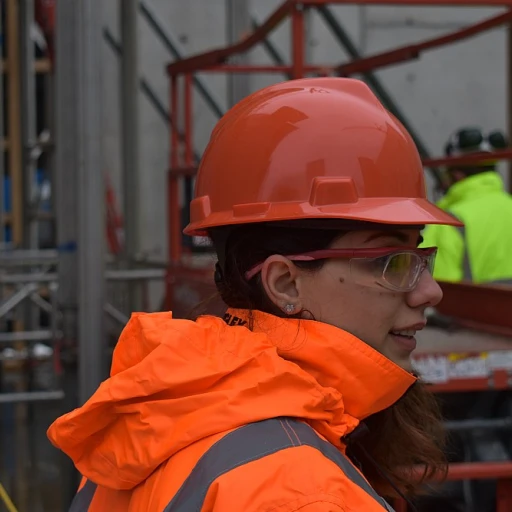
The Importance of Employee Climate Surveys in Remote Work
In the evolving landscape of remote work, understanding the pulse of your workforce has become more crucial than ever. Employee climate surveys serve as a vital tool in this process, offering deep insights into the organizational climate and overall employee satisfaction. These surveys help organizations gauge how employees feel about their work environment, engagement levels, and work-life balance.
The importance of employee climate surveys cannot be overstated in maintaining a healthy workplace culture, as they identify areas that require attention and improvement. They allow companies to monitor the nuanced elements of their remote work environment, ensuring that employees feel valued and heard. Moreover, they provide a structured avenue for open communication between employees and management, fostering trust and transparency within the organization.
Organizations can take advantage of employee climate surveys to gather employee feedback regularly, using it to inform decisions related to workplace culture and organizational change. By tailoring survey questions to the specific challenges and dynamics of remote teams, companies can effectively measure employee engagement and satisfaction.
Furthermore, the data collected from these surveys serve as a foundation for analyzing current work environments and implementing necessary changes. Organizations looking to enhance the employee experience might find the intersection between conversational AI chatbots and human assistants particularly enlightening, bringing fresh perspectives to employees' interactions and well-being.
Crafting Effective Survey Questions for Remote Teams
Designing Impactful Questions for Remote Work Surveys
Crafting effective survey questions is critical to gathering meaningful employee feedback in a remote work environment. Organizations must prioritize the clarity of their survey questions to ensure employees understand and provide genuine responses about their workplace climate and satisfaction levels.- Clarity and Simplicity:
- Relevance to Remote Work:
- Mix of Question Types:
- Use of Survey Templates:
- Regular Updates:
Analyzing Survey Data to Improve Remote Work Environments
Transforming Data Into Actionable Insights
In the evolving landscape of remote work environments, understanding employees' feelings and experiences is crucial. Once employee climate surveys are conducted, the next vital step is the careful analysis of survey data to derive insights that can be translated into meaningful action for improving remote workplaces. The data gathered from these surveys typically comprises quantitative and qualitative elements. Quantitative questions, often formatted on a Likert scale, provide measurable insights into areas such as employee satisfaction, engagement, and organizational climate. On the other hand, open-ended questions allow employees to express nuanced feedback, giving employers a deeper understanding of the organizational culture and work life balance concerns. For an organization to respond effectively, it’s essential to identify areas of concern or opportunities for enhancement. This can be achieved by:- Trend Analysis: Compare current data with previous surveys to identify shifts in employee engagement or workplace satisfaction over time.
- Segmentation: Break down responses by department, role, or tenure to pinpoint specific areas where improvements are needed or where certain teams excel.
- Correlation Studies: Analyze the relationship between different factors, like the impact of flexible schedules on employee satisfaction.
Addressing Common Remote Work Challenges Through Surveys
Addressing Remote Work Challenges through Employee Climate Surveys
In an era where remote work is gaining prominence, organizations are increasingly recognizing the value of employee surveys to address common challenges. Employee climate surveys play a crucial role in emphasizing open communication and identifying areas for improvement within the organizational climate. One significant challenge in remote work is maintaining employee satisfaction and engagement. Surveys act as a medium for employees to express how they feel about their work-life balance and workplace environment. By posing well-thought-out survey questions, companies can gather insights on the remote work culture and organizational climate. For instance, by including open-ended questions in the survey, organizations encourage employees to provide detailed feedback on what influences their employee experience. This approach not only assesses employee satisfaction but also helps gather qualitative data that can inform decision-makers about necessary improvements in the work environment. Moreover, climate surveys serve as a tool to measure employee engagement. When employees feel that their feedback is valued, it fosters a sense of belonging, improving the overall workplace climate. Survey templates should be designed to capture how well employees feel integrated into the company's remote work culture. As organizations receive climate survey results, the data serves as a foundation for understanding prevalent issues and identifying areas that require attention. The organization can then formulate strategies to tackle these challenges, ensuring a more effective remote work setup for its employees.Implementing Changes Based on Survey Feedback
Implementing Survey-Informed Transformations
Employee climate surveys can significantly impact a remote organization when the collected data is translated into actionable improvements. Utilizing survey feedback, companies can better understand how employees feel about their work environments, offering crucial insights into employee satisfaction and engagement. To successfully implement changes, organizations should ensure clear open communication with their workforce. Keeping employees informed of the changes being made fosters a culture of trust and transparency, strengthening the organizational climate. Here are a few steps to consider when acting on survey data:- Identify Areas for Improvement: Examine the feedback to pinpoint specific aspects of the organizational climate that need attention. This process can include both quantitative data from scaled survey questions and qualitative insights from open-ended responses.
- Prioritize Changes: Not every identified issue can be addressed immediately. Prioritize changes that directly impact employee engagement and satisfaction to maximize the effectiveness of any interventions.
- Collaborate for Solutions: Engage with teams across various departments. Collaborative problem-solving not only creates more comprehensive solutions but also enhances employee experience by encouraging staff participation in improving their workplace culture.
- Monitor and Assess Impact: After implementing changes, regularly review their effectiveness through ongoing surveys or feedback sessions. This continuous process helps maintain a conducive work environment and ensures that workplace climate evolves positively.












